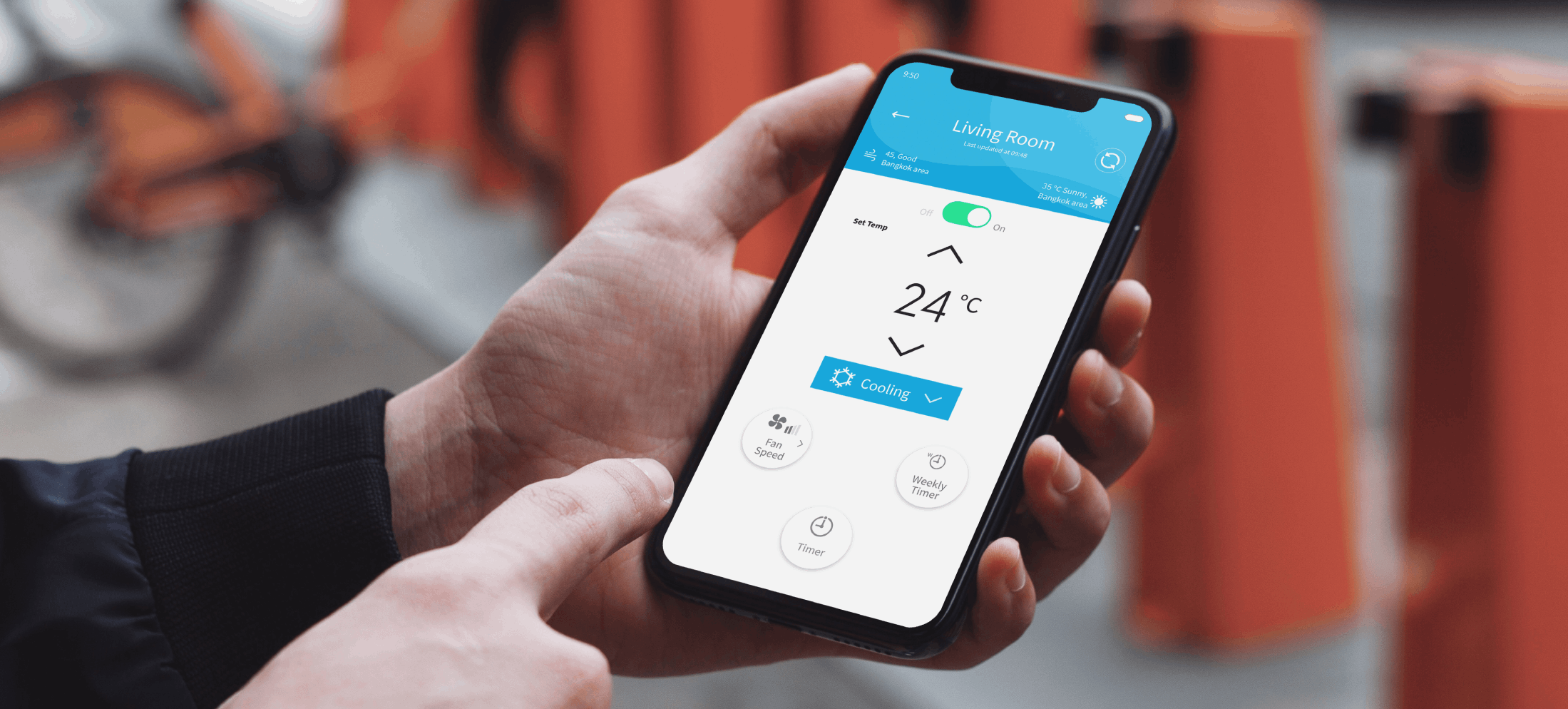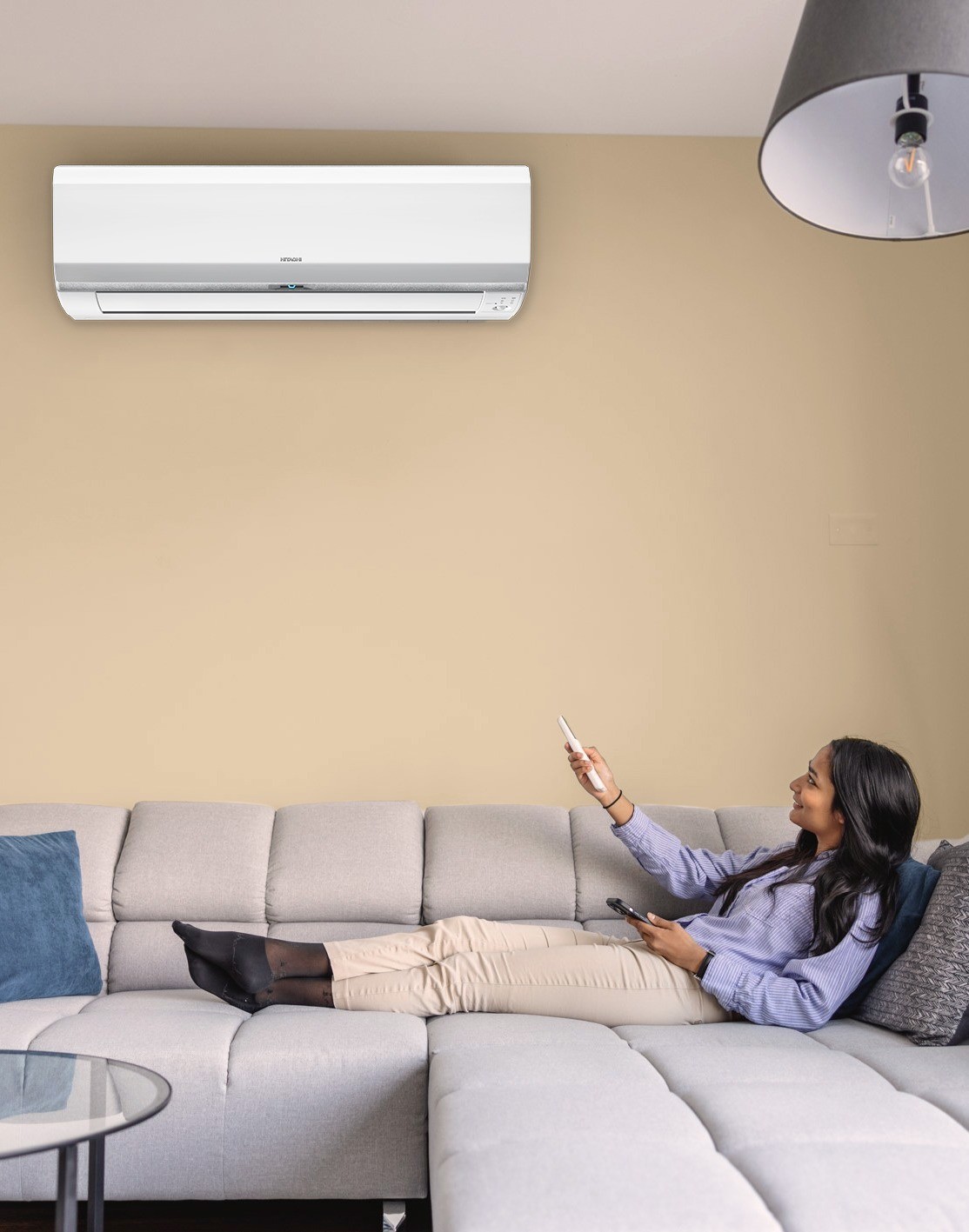–Heat Pump WiFi - airCloud Go: How IoT Improves the Experience of Comfort

The Internet of Things (IoT) has paved the way for a host of smart domestic technologies capable of communicating and working with one another in commercial and residential settings. Its uses ranges from security systems to kitchen appliances, through to activity trackers and smart speakers. Today, the IoT is being used to enhance how we experience comfort at home, reinventing the way we interact with the technology in our houses. With the growing interest in connected and convenient home solutions, we’ve refreshed our IoT offering with the launch of airCloud Go, our new suite of apps that makes your heat pump a smart heat pump.
In this article you will read about:
● What the Internet of Things is
● Examples of devices that use the IoT
● The IoT and home automation
● Voice command and its advantages
● Smart heat pump's and the benefits of airCloud Go

The Internet of Things and Your Home
If you’re not familiar with the concept of the Internet of Things, the IT education site Tecnopedia has the perfect definition:
“The Internet of Things (IoT) is a computing concept that describes the idea of everyday physical objects being connected to the internet and being able to identify themselves to other devices (…). The IoT is significant because an object that can represent itself digitally becomes something greater than the object by itself. No longer does the object relate just to its user, but it is now connected to surrounding objects and database data.”
Source: Techopedia.com
As suggested above, these objects, also referred to as devices, use the internet to interact with each other and to receive commands from another device or user. There are a variety of applications and systems that connect devices together and that dictate the way in which they operate:
● Devices that collect information and send it to another
● Devices that receive information and then produce an action
● Devices that are capable of doing both
So, how does this benefit the home environment? One of the keywords when answering this is “convenience”. With the correct setup of the IoT in the house, tasks like opening and closing the curtains, locking the doors at night and initiating your robot vacuum cleaner are performed without the need for human interaction.
Another example of the IoT at home could be the lights automatically dimming when you begin to watch a film, or the volume of music rising in response to the amount of people and noise in a room. It’s these relatively small actions, produced by data-sharing between devices, that improve the experience of our comfort at home.
Homeowners can enjoy greater management of their devices by using their smartphone or tablet as a means to control them. This is achieved by pairing the device with the smartphone or tablet, or even simply by sharing the same WiFi. Then, generally, a dedicated app enables the user to operate the device, even when away from home.

Common Applications of the IoT at Home
One of the more obvious applications of the IoT at home is the Smart TV, which features a series of apps on its home screen. These can then be accessed using a controller or smart device (like a phone).
Another major application of the IoT that caught the imagination of millions around the world is the activity tracker; the wrist-worn devices that send and receive data about calories, sleep patterns, heart rate and more, and lets the user track their health and progress via visual charts on their phones. This idea further extends to smartwatches that combine fitness tracking, messaging and social media notifications, all conveniently available on the wearer’s wrist from wherever they are.
As previously mentioned, other uses include lighting, security systems and monitoring technology, which are connected to our devices and give us real time control and accessibility.
With more and more homes adopting smart technology, we are moving towards the concept of the smart home and creating living spaces that react and adapt to our needs with just a few or no commands required, paving the way for home automation.
The Internet of Things and Home Automation
At the end of 2019, Statista reported that the U.S. ranked as the largest consumer of smart home technology with a market volume of $23.5 billion, and is predicted to reach around $62.7 billion by 2023. China isn’t too far behind in terms of market volume, and it’s these two countries are making smart homes and home automation a reality.
Home automation indicates a centralised system that controls lighting, heating, use of appliances and entertainment tech throughout the whole house. These systems can act on their own or be programmed to activate certain devices during particular hours. One of the greater benefits of home automation is how it can be used to optimise the usage of appliances around the home and, in return, improve energy consumption and efficiency.

Amazon Echo and Google Home are leading examples of smart home products that act as a centralised control hub which let homeowners connect multiple devices together. Referred to as smart speakers, voice commands are used and the speaker will create an action in response. These actions are instigated by the smart speaker’s assistant which, in the examples given above, are Amazon Alexa and Google Assistant. Common actions performed using smart speakers are requests for music reproduction, information inquiries and dialling phone numbers, all achieved hands-free.
The smart speaker has become one of the fastest growing products within the smart home sector. A research report conducted by MarketsandMarkets, highlighted that, “the smart speaker market size is expected to grow from $7.1 billion in 2020 to $15.6 billion by 2025”. Research by IHS Markit supports this predicted growth, stating that 85 million units will be shipped in 2021.
As uptake of this technology continues to rise, the need for a wider variety and improved ways for homeowners to connect and control these devices has become expected, if not mandatory.
The Use of IoT and Smart Air Conditioners
Residential air conditioning is also evolving at a rapid pace, and the focus on smart air conditioners to increase the overall efficiency and customer experience is vital. By providing homeowners with intuitive solutions, companies are able to provide excellent climate control that is convenient. As the adoption of smart thermostats in the home continues to grow (a market that is predicted to reach $8.78 billion globally by 2026), the need to improve the experience of climate control via a wider exploration of what IoT can do for households has followed suit.
Going Smart with airCloud Go
airCloud Go is our next generation of IoT centric apps that does just that, provide convenient climate control that lets you manage and monitor your system via your smartphone, and helps lower energy consumption. With its modernised UI, the user experience is simple and intuitive, from installation through to its configuration and usage.
Our series of airCloud apps have been designed to compliment our lifestyles and work in sync with our busy schedules. Operating the heat pump and adjusting the temperature is made easier, and homeowners have freedom to control their heat pump from anywhere in the house or even when on the go. As a means to improve comfort, convenience and energy efficiency, with airCloud Go:
● Check the status of your heat pump at a glance without having to enter the specific room and interact with the unit itself
● Operate remotely from wherever you are, even when out of the house and prevent excessive usage
● Benefit from a more intuitive and attractive user interface than what regular remote controls provide
● Turn off all the heat pumps using just one button (who hasn’t left their heat pump running by mistake?)
● Have increased control over the efficiency of your home’s heat pump

Voice Command and Smart Air Conditioning
Voice command lets users control their air conditioning hands-free when at home, making it convenient when engaged in other activities around the house whilst keeping the perfect indoor climate. By using airCloud Go, tasks like cooking, cleaning or working out at home don’t need to be interrupted. You can rely on voice command to alter the air around you, so you don’t have to worry about carrying dirt or mess across the room or physically handling the remote control.
Easy to Install, Easy to Use
The ease of installation can sway a customer’s interest in a product, and, with that in mind, we’ve made sure that airCloud Go is fast and easy to install, as is the process of pairing it with your smartphone. By using the QR code featured on the unit, in just a few steps you’ll be able to use your smartphone or speaker to manage your home’s air.
Each household is different and we built airCloud Go with this in mind so it fits in with your lifestyle:
● grant access to up to 10 users
● as many as 20 Hitachi Cooling & Heating heat pumps can be controlled by the app
● create heat pump activity schedules and plan ahead based on your routine or upcoming plans, helping you run your units more efficiently
In order to enjoy airCloud Go, Hitachi Cooling & Heating offer wifi-ready heat pump, either with built-in chip or by using an adapter.
With the Internet of Things and its possibilities in constant evolution, we’re constantly develop new ways to make your comfort at home more connected, reliable and efficient.
To discover more about airCloud Go, click here, and if you have an enquiry about our products and services, you can contact us here.
by Hitachi
















































